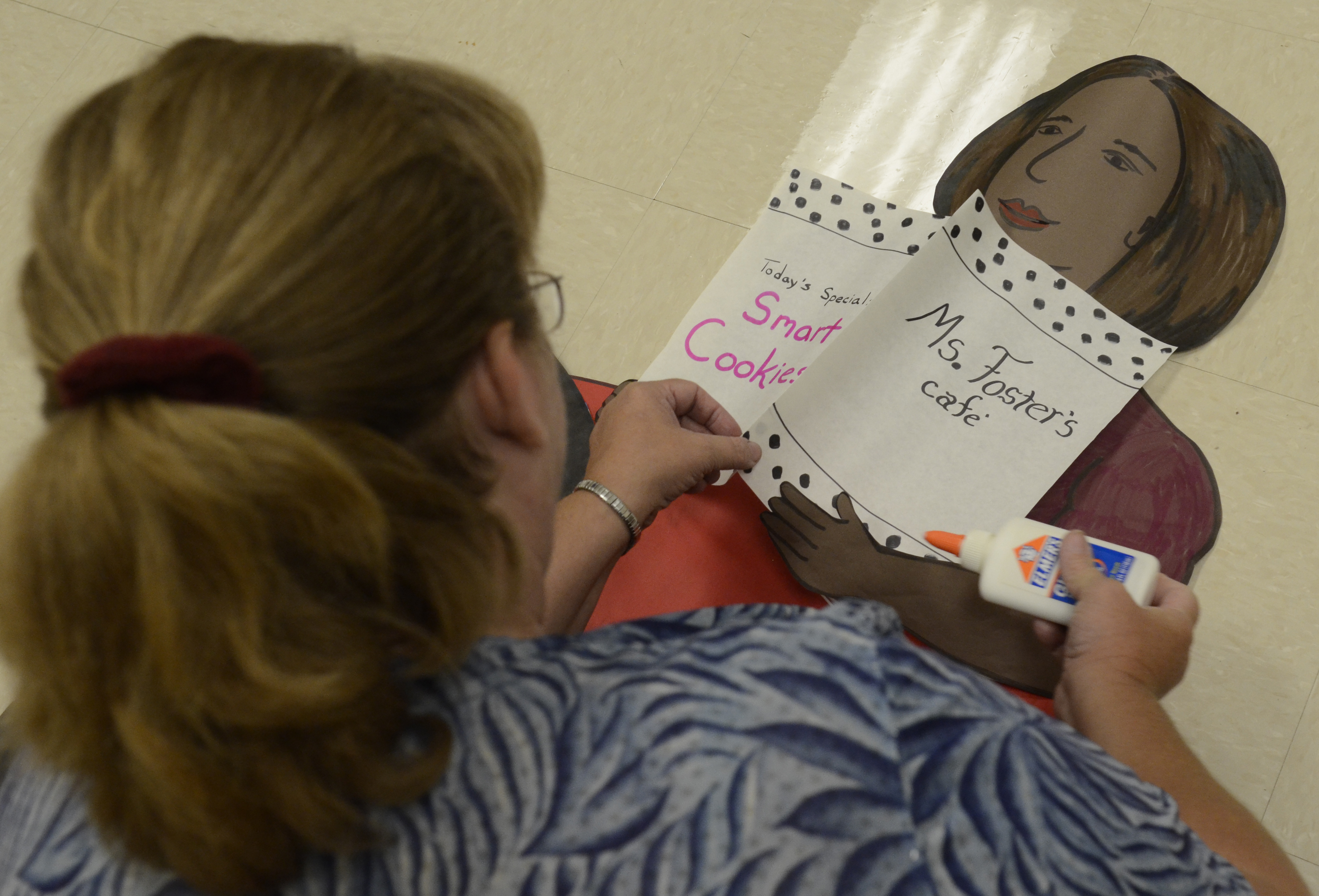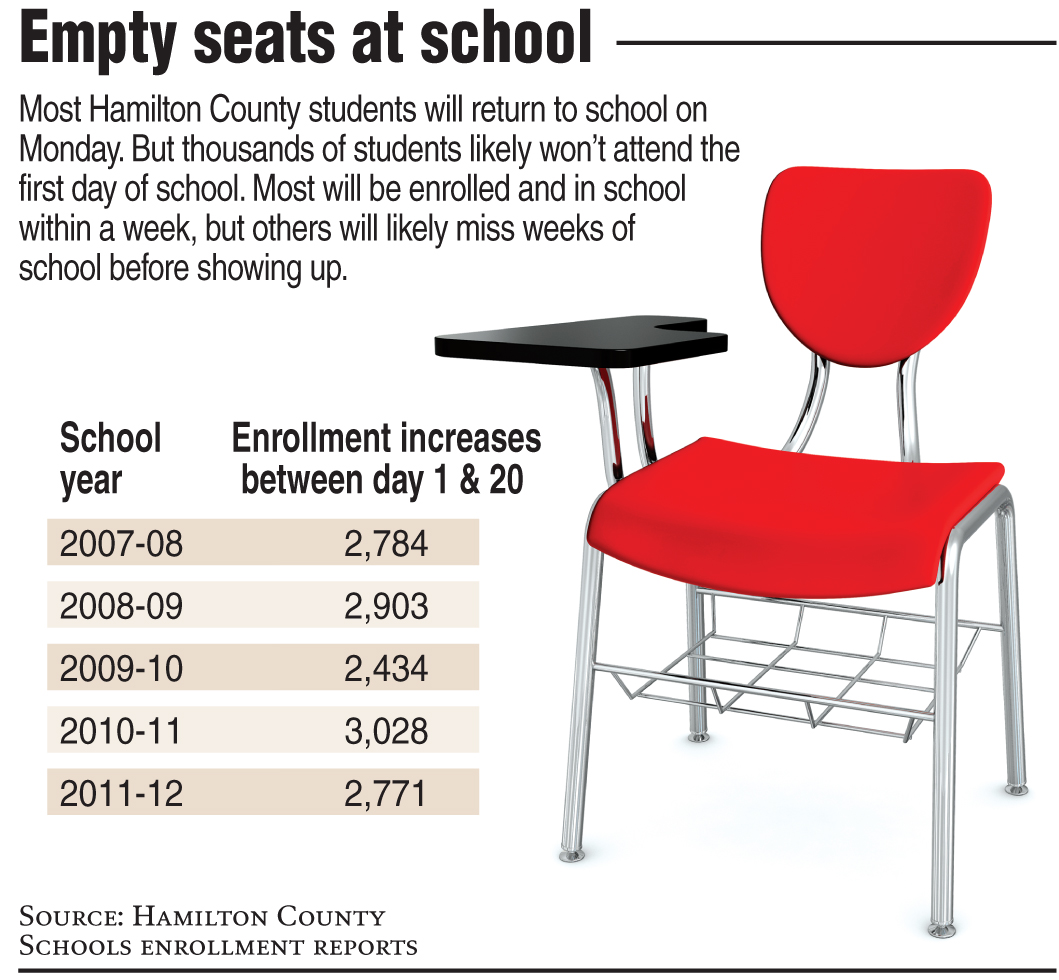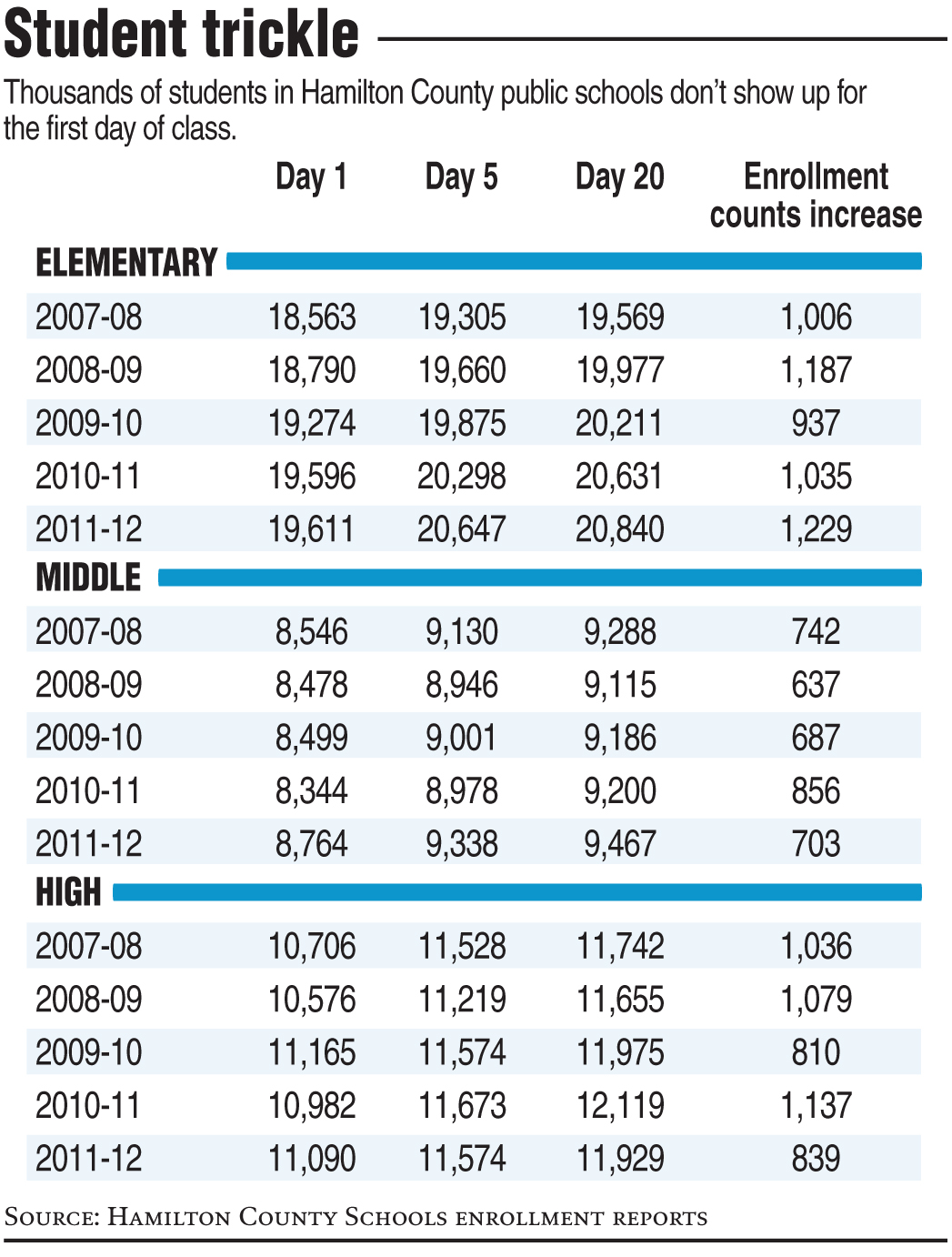Many will miss first school day in Hamilton County
Friday, January 1, 1904
Read more about schoolsHealthier school lunches driving prices up
When the bells ring in schools across Hamilton County on Monday morning, thousands of students who should be at their desks likely won't even be in school.
If recent attendance patterns hold, about 3,000 of the county's 42,000 public school students won't be counted when teachers take roll on the first day of classes. Most of those missing on Day 1 will be enrolled and in school within a week, yet hundreds more will not show up until they have lost as much as three weeks of instruction. Their absence puts them far behind classmates with little hope of ever catching up and makes it more difficult for their schools and the district to meet testing goals.
"If you want school to count, it's hard to deal with," said Hedy Chang, director of Attendance Works, a national initiative working to address chronic absence in schools.
"How do you keep everybody on the same page if students are trickling in? It makes teaching much more difficult."
A review of the last five years of enrollment data shows a consistent pattern of students arriving well after official start dates. Last year, more than 2,700 students, or about 6.5 percent of students, weren't in school on the first day.
Using school district enrollment counts from the first, fifth, seventh, 10th, 16th and 20th day of school, a Times Free Press review also found:
• The trickle effect is more pronounced in the county's urban schools. Last school year, both Brainerd and Central high schools added about 100 students over the first month of school. Hardy Elementary School swelled from 341 students on day one to 482 students by the 20th day.
• Suburban and rural schools tend to have steadier enrollments. North Hamilton County Elementary saw only a two-student difference in its 378 first-day head count and its 380 count on the 20th day. Thrasher Elementary on Signal Mountain had the same enrollment count of 569 on the first and 20th day of school last year.
• The trickle is consistent. Over the last five years, between 2,434 and 3,028 students were added to the rolls between the first and 20th day of school.
• The problem seems to affect schools of all levels -- elementary, middle and high school.
The explanations vary on why so many kids show up late, though it's clear the problem can lead to logistical headaches for schools and teachers trying to build routines and set up class sizes.
Reasons for late arrivals include summer family vacations, families who have moved over the summer or those who have requested to transfer schools. There's also a feeling among some parents that school doesn't or shouldn't really start until after Labor Day in September.
While little national research exists, Chang said she hears anecdotally of the trickle effect happening in schools across the country.
She said students who miss the first few days -- or weeks -- miss out on basic concepts that teachers build upon. Missing that information puts them behind and makes future absences even more likely, she said.
"If you have a lot of kids not showing up on the first day, you've established a culture of nonattendance and the teacher has to go slower," Chang said. "And we demand our teachers to cover a lot in a year."
Some communitywide efforts have been successful in encouraging school attendance in districts across the country, she said.
In Oakland, Calif., the public housing authority reached out to families and held back-to-school events, reminding them of the first day of school.
To make sure students made it to the first day of classes, Baltimore social services workers reached out to students who had been chronically absent in previous school years, missing 10 percent or more of class days.
Though more school districts have established August start dates, Chang said many people can't kick the idea that school starts after Labor Day.
That's an idea that has also endured locally, though schools have had August start dates for years.
"If parents didn't start school until after Labor Day, they may not think it's important for their kids to start until after Labor Day," said Orchard Knob Elementary School Principal LaFrederick Thirkill.
Last fall, Orchard Knob's first-day enrollment of 326 rose to 460 by the 20th day. But Thirkill said much of that increase was because of overcrowding and rezoning from East Side Elementary School, which brought East Side students to Orchard Knob.
East Side's enrollment swelled from 329 on day one to 558 by day 20.
"We want them here every single day. But there are many factors that play into that," Thirkill said.
Hamilton County Schools Superintendent Rick Smith said too many families wait too long to enroll their children, delaying their students' start dates.
Students who show up to enroll on the first day of school may not be able to start immediately if paperwork isn't in order or if they come to the wrong school, he said.
Late arrivals cause even bigger headaches at high schools, he said, because a student must be enrolled in several different classes and fit into a complicated master schedule. In the lower grades, students are usually just assigned to a primary classroom.
"Our expectation and the teacher's expectation is to have all students in school the first day of school because they're going to start instruction pretty quickly," Smith said.


